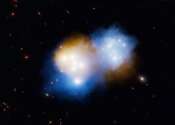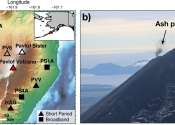Dark Energy Camera probes the Coma Cluster, an inspiration for the theory of dark matter
The Dark Energy Camera has captured an image of the dazzling Coma Cluster, named after the hair of Queen Berenice II of Egypt. Not only significant in Greek mythology, this collection of galaxies was also fundamental to the ...









